5 best Advanced Hosting features to boost your SEO efforts : Beyond the basics
In a competitive environment that demands online visibility, mastering the basics of search engine optimization (SEO) is no longer enough to secure a prominent position in search engine rankings. As search algorithms evolve and user expectations increase, a website owner should consider advanced hosting features to improve their SEO efforts. In addition to basic hosting services, advanced features such as server-side caching, image optimization tools, built-in security measures, content delivery networks (CDNs) and search engine optimization (SEO) plugins and integrations play an important role in optimizing your site's performance, improve user experience and ultimately improve SEO rankings. This article delves into the intricacies of these advanced hosting features, exploring their capabilities, SEO benefits and best practices for implementation.
Server-side caching is a basic technique used by hosting providers to optimizes website performance by storing static copies of web pages, reducing server load and page load time up. By caching frequently accessed content at the server level, hosting platforms are able to serve the web pages to users more efficiently, resulting in a smoother browsing experience. From an SEO perspective, fast loading time are very important, as search engines prioritize user experience and site speed in their ranking algorithms. Gauravgo provides advanced hosting features, which will help you to maximize your website speed and performance.
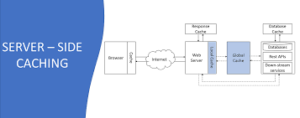 About server-side caching mechanisms: Server-side caching works through a variety of mechanisms including:
About server-side caching mechanisms: Server-side caching works through a variety of mechanisms including:
- Page caching: Entire HTML pages are cached to bypass dynamic generation on each user request. Cached pages are served directly from the server, minimizing processing time and bandwidth usage.
- Object caching: In addition to HTML pages, server-side caching also extends to other web elements such as database queries, API responses and session data. By caching frequently accessed objects, the hosting server further optimizes performance and reduces backend processing overhead.
Impact on SEO: Implementing server-side caching has a significant impact on SEO:
- Improved page load speed: Faster load time improve user engagement, lower bounce rates, and It tells search engines that your site provides a positive user experience. . As a result, websites with efficient server-side caching are more likely to rank higher in search results.
- Improved crawling and indexing: Search engine bots crawl and index web pages more efficiently when delays are minimized. Hosting platforms quickly serve cached content, allowing for faster indexing and ensuring that the latest updates appear in search results immediately.
 Implementing a server-side caching strategy: Effective implementation of a server-side caching strategy includes:
Implementing a server-side caching strategy: Effective implementation of a server-side caching strategy includes:
- Leverage content delivery networks (CDNs): CDNs distribute cached content across multiple servers in different geographic regions, allowing for faster delivery to users around the world. Integrating a CDN into your hosting service can significantly improve your website’s performance and SEO rankings.
- Configuring cache control headers: Specifying cache control directives in HTTP headers gives site owners more control over cache behavior. Setting appropriate cache lifetimes for different types of content ensures optimal performance while avoiding cache staleness issues.
 Images play an important role in web design because they enrich content and engage visitors. However, large image files can affect page loading speed and negatively impact your SEO rankings. Image optimization tools provided by advanced hosting services address this challenge by compressing images without sacrificing quality, balancing visual appeal with performance optimization.
Images play an important role in web design because they enrich content and engage visitors. However, large image files can affect page loading speed and negatively impact your SEO rankings. Image optimization tools provided by advanced hosting services address this challenge by compressing images without sacrificing quality, balancing visual appeal with performance optimization.
Image optimization techniques: Image optimization techniques include:
- Lossless compression: This method improves visual quality by removing redundant data and optimizing compression algorithms. Reduce image file size without loss. Lossless compression techniques are particularly effective for PNG and GIF images, preserving transparency and fine detail.
- Lossy compression: Lossy compression reduces image quality slightly, but provides a significant reduction in file size compared to lossless methods. JPEG images are often subject to lossy compression, so users adjust the compression level to find the best balance between quality and size.
Impact on SEO: Optimized images contribute to improving the SEO performance through:
- Faster page load time: Optimized images increase page load speed, improving user experience and SEO performance. Search engines prioritize fast-loading websites, so image optimization is a key factor in achieving high rankings.
- Reduce bounce rate: High-quality images that load quickly attract users, encourage them to explore further, and reduce bounce rates. Optimized images ensure visitor retention, improve SEO metrics and increase organic traffic.
Using advanced image optimization features: Advanced image optimization features include:
- Automatic compression algorithms: Hosting platforms often automatically compress images upon upload. AI-driven algorithms are used for this purpose. This streamlines the optimization process for website owners and eliminates the need for manual intervention.
- Responsive image delivery: With the proliferation of mobile devices, responsive design has become essential to provide an optimal user experience across a variety of screen sizes. A hosting service that supports responsive image delivery will provide appropriately sized images based on the user’s device, further improving performance and SEO.
 Security is paramount in the digital realm, as cyber threats pose significant risks to your website and online business. Advanced hosting services integrate robust security measures to protect against malware, hacking attempts, and data breaches. These security features not only protect sensitive information, but also strengthen the SEO efforts by building trust and confidence among visitors and search engines alike. Gauravgo provides different hosting plans with full security, which will protect your website.
Security is paramount in the digital realm, as cyber threats pose significant risks to your website and online business. Advanced hosting services integrate robust security measures to protect against malware, hacking attempts, and data breaches. These security features not only protect sensitive information, but also strengthen the SEO efforts by building trust and confidence among visitors and search engines alike. Gauravgo provides different hosting plans with full security, which will protect your website.
Key Security Features of Hosting Providers: Hosting Providers offer a variety of security features, including:
- SSL/TLS Encryption: The Secure Socket Layer (SSL) and Transport Layer Security (TLS) protocols encrypt data sent between web servers and your browser to ensure confidentiality and integrity. Websites with SSL/TLS certificates are more trusted by search engines and are given priority in search results.
- Web Application Firewall (WAF): WAF monitors incoming web traffic, filters malicious requests, and protects against common attacks such as SQL injection, cross-site scripting (XSS), and distributed denial of service (DDoS) attacks, protect your website from threats. WAF enhances search engine optimization by reducing security risks and maintaining website availability and reliability.
SEO Impact: SEO Impact of Security Measures:
- Search Engine Trust Signals: Search engines prioritize secure websites in their ranking algorithms and consider SSL/TLS encryption as a trust signal. Websites that don’t have proper security measures in place can be penalized or warned, which can negatively impact SEO performance.
- User trust and engagement: A secure website inspires trust among visitors, promoting long-term engagement and repeat visits. By demonstrating a commitment to protecting user data, websites with robust security measures foster a positive user experience and ultimately lead to improved SEO metrics.
Implement a comprehensive security strategy: A comprehensive security strategy includes:
- Regular security audits and updates: To maintain the stability of your website’s security, continuous monitoring and timely updates are essential. Hosting platforms often provide automated security scanning and patch management services to proactively identify and remediate vulnerabilities.
- Two-factor authentication (2FA): Enabling 2FA adds a layer of security to your website’s login process, reducing the risk of unauthorized access. By implementing multi-factor authentication mechanisms, website owners can reduce the impact of credential-based attacks and improve their overall security posture.
 CDN optimizes website performance and improves global accessibility by distributing content across multiple servers in different geographic regions, plays an important role in CDNs improve page load time and user experience by reducing latency and minimizing data transfer distance, which positively impacts SEO rankings.
CDN optimizes website performance and improves global accessibility by distributing content across multiple servers in different geographic regions, plays an important role in CDNs improve page load time and user experience by reducing latency and minimizing data transfer distance, which positively impacts SEO rankings.
Role of CDN in website optimization: CDN optimizes website performance in the following ways:
- Edge server distribution: CDN manages multiple edge servers strategically distributed in different regions for caching to users. Deliver content from the nearest server location. This reduces latency, speeds up content delivery, and improves overall website performance.
- Caching and Compression: CDNs cache static content such as images, CSS files, and JavaScript libraries, reducing load on origin servers and speeding up page load time. Additionally, CDNs often use compression techniques to minimize file size and optimize data transfer efficiency.
SEO Benefits of CDN Integration: There are several SEO benefits of integrating a CDN with your hosting service, including:
- Improve page load speed: By reducing latency and speeding up content delivery, CDNs can help reduce page load times, SEO ranking. Search engines prioritize websites that provide the best user experience, making CDN integration a valuable strategy for SEO optimization.
- Global accessibility: CDNs allow websites to serve content to users around the world from nearby server locations, regardless of geographic distance. This increases the accessibility and performance of website for users around the world, increasing user engagement and improving search engine rankings.
Choosing the right CDN for your website: Here are the factors to consider when choosing a CDN:
- Network coverage and performance: The CDN’s network coverage, including server location, network capacity, and latency and evaluate performance metrics. To ensure optimal content delivery to your audience, choose a CDN with a global presence and strong infrastructure.
- Integration and Compatibility: Ensure compatibility between your chosen CDN and your hosting platform or content management system “CMS”. Choose a CDN that offers seamless integration into your existing infrastructure and comprehensive support for your website needs.
 SEO plugins and integrations are tailored to improve your site’s visibility, attract organic traffic and improve search engine rankings. Streamline your optimization efforts by providing tools, features, and functionality that help you optimize your optimization efforts. From WordPress SEO plugins to integrations with third-party SEO tools and platforms, these solutions provide comprehensive support for on-page optimization, content management and performance tracking.
SEO plugins and integrations are tailored to improve your site’s visibility, attract organic traffic and improve search engine rankings. Streamline your optimization efforts by providing tools, features, and functionality that help you optimize your optimization efforts. From WordPress SEO plugins to integrations with third-party SEO tools and platforms, these solutions provide comprehensive support for on-page optimization, content management and performance tracking.
WordPress SEO Plugin: WordPress SEO Plugin Provides:
- On-Page Optimization Tools: The WordPress SEO plugin provides meta tags, XML sitemaps, provides on-page optimization tools such as canonical URLs and schema markup and organic ranking. By optimizing title tags, meta descriptions and heading tags, website owners can increase keyword relevance and increase click-through rates in search results.
- Content Analysis and Recommendations: The WordPress SEO plugin analyzes content quality, readability and keyword usage and provides recommendations to optimize your blog posts, articles and web pages. By following SEO best practices and implementing the suggested improvements, website owners can create content that resonates with their target audience and ranks high on search engine results pages (SERPs).
Integrations with SEO tools and platforms: Integrations with SEO tools and platforms allow you to:
- Data Sync and Reporting: Integration of hosting services with SEO tools and platforms allows for seamless data sync and reporting, allowing website owners to track performance metrics. Monitor keyword rankings and measure the effectiveness of your SEO campaigns. By integrating data from multiple sources, a website owner can gain actionable insights into their SEO performance and make informed decisions to drive organic growth.
- Workflow automation and optimization: Integrating hosting services with SEO tools and platforms streamlines workflow automation and optimization, facilitating tasks such as keyword research, content optimization, link building and performance tracking. By automating repetitive tasks and leveraging machine learning algorithms, website owners can optimize resource allocation and focus on strategic efforts to achieve SEO goals.
Customize the SEO plugin for maximum effectiveness: Customize the SEO plugin to:
- Customize functionality to suit your specific requirements: Customize the SEO plugin to improve your website. Owners can customize functionality to suit their specific needs, ensuring compatibility with their website’s architecture. Content management system “CMS” and SEO measures. By customizing settings, templates and configurations, site owners can optimize the plugin’s performance and maximize its impact on SEO rankings.
- Integrating Third-Party Extensions and APIs: Integrating third-party extensions and APIs with SEO plugins extends their functionality and improves functionality, allowing website owners to use them for advanced SEO optimization. Additional tools and services will be available to you. By integrating analytics platforms, keyword research tools and content management systems (CMS), website owners can create a comprehensive SEO toolkit to meet their changing needs and goals.
 In a competitive environment that demands online visibility, it’s important to take advantage of advanced hosting features to optimize your SEO performance and stay competitive. From server-side caching to image optimization tools to built-in security measures, hosting platforms offer a variety of features designed to improve the speed, reliability and security of your website. By understanding the SEO benefits associated with these advanced features and implementing them effectively, website owners can take their digital presence to a new level, attract organic traffic and gain an advantage in search engine results. You can secure a good ranking.
In a competitive environment that demands online visibility, it’s important to take advantage of advanced hosting features to optimize your SEO performance and stay competitive. From server-side caching to image optimization tools to built-in security measures, hosting platforms offer a variety of features designed to improve the speed, reliability and security of your website. By understanding the SEO benefits associated with these advanced features and implementing them effectively, website owners can take their digital presence to a new level, attract organic traffic and gain an advantage in search engine results. You can secure a good ranking.
We at GauravGo also provide different hostings with full security. So, that best hosting can help to build modern web. Learn more about the various hosting services offered by GauravGo! We also provide a variety of offerings. So, follow us to stay up to date.
We’re here to help you get the most out of your hosting experience! We endeavor to give our clients with the greatest possible user experience as well as a variety of hosting options tailored to their unique requirements. With our unrivaled hosting services, designed exclusively for startups and students. Everyone will receive one month of free hosting and a subdomain, as well as up to 75% more low-cost hosting servers and a 3X easier-to-use interface with personalized customer support.
Please visit our website for further information about new features of hosting. And also got more information about technology.
Until then, be informed and safe.






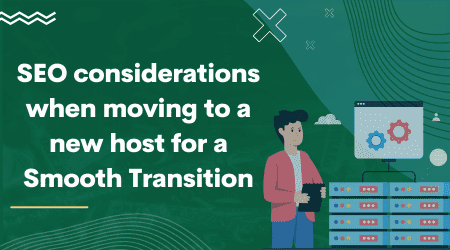
 Before we dive into
Before we dive into  Comprehensive website audit: Before starting the migration process, anyone can conduct thorough audit of your website. Identify high-performing pages, inbound links, keywords, and existing SEO issues that need to be addressed.
Comprehensive website audit: Before starting the migration process, anyone can conduct thorough audit of your website. Identify high-performing pages, inbound links, keywords, and existing SEO issues that need to be addressed. 301 redirects: Implement 301 redirects to redirect old URLs to the corresponding new URLs. This redirects both users and search engines to updated pages, maintains your site’s link value, and prevents rankings from dropping.
301 redirects: Implement 301 redirects to redirect old URLs to the corresponding new URLs. This redirects both users and search engines to updated pages, maintains your site’s link value, and prevents rankings from dropping. Content inventory: Take inventory of your existing content and identify any outdated, redundant, or low-quality pages that need to be updated or removed.
Content inventory: Take inventory of your existing content and identify any outdated, redundant, or low-quality pages that need to be updated or removed. Monitor performance metrics: Keep an eye on key performance metrics like post-migration organic traffic, keyword rankings, bounce rate, and conversion rate. Monitor fluctuations and take corrective action as necessary.
Monitor performance metrics: Keep an eye on key performance metrics like post-migration organic traffic, keyword rankings, bounce rate, and conversion rate. Monitor fluctuations and take corrective action as necessary.
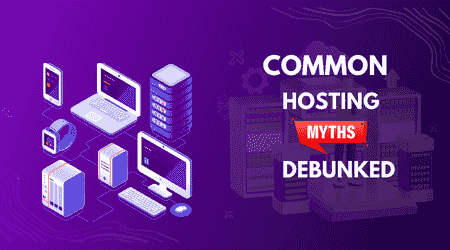
 Shared hosting is often touted as the most budget-friendly hosting solution and is aimed at individuals and small businesses on a budget. This hosting typically offers lower prices compared to other types of hosting, but it’s not necessarily the cheapest option in the long run. With shared hosting, multiple websites share the same server resources, which can lead to performance issues and slow loading times, especially during peak traffic times. Additionally, this hosting plans may have storage, bandwidth, and feature limitations that require the user to upgrade as her website grows. Therefore, the real cost of shared hosting may include hidden costs related to scalability and performance optimization.
Shared hosting is often touted as the most budget-friendly hosting solution and is aimed at individuals and small businesses on a budget. This hosting typically offers lower prices compared to other types of hosting, but it’s not necessarily the cheapest option in the long run. With shared hosting, multiple websites share the same server resources, which can lead to performance issues and slow loading times, especially during peak traffic times. Additionally, this hosting plans may have storage, bandwidth, and feature limitations that require the user to upgrade as her website grows. Therefore, the real cost of shared hosting may include hidden costs related to scalability and performance optimization. At the other end of the spectrum is dedicated hosting. The entire server will be dedicated to the one website or client. This hosting offers unparalleled control, security, and performance, but it’s not always the best option for every scenario. This hosting plans cost significantly more than shared hosting, making them impractical for individuals and small businesses with limited resources. Additionally, managing dedicated servers requires technical expertise such as server administration, security updates, and troubleshooting, which can be difficult for inexperienced users. The features and resources provided by dedicated hosting often far exceed the needs of his website and can incur unnecessary costs.
At the other end of the spectrum is dedicated hosting. The entire server will be dedicated to the one website or client. This hosting offers unparalleled control, security, and performance, but it’s not always the best option for every scenario. This hosting plans cost significantly more than shared hosting, making them impractical for individuals and small businesses with limited resources. Additionally, managing dedicated servers requires technical expertise such as server administration, security updates, and troubleshooting, which can be difficult for inexperienced users. The features and resources provided by dedicated hosting often far exceed the needs of his website and can incur unnecessary costs. Virtual Private Server (VPS) hosting is often positioned as a middle ground between shared and dedicated hosting, offering a balance between affordability and performance. Although this hosting provides dedicated resources within a virtualized environment, it is not inherently better than shared hosting in every way. This hosting plans typically offer more flexibility, scalability, and customization options than shared hosting, making them ideal for growing websites and applications. However, this hosting also requires more technical knowledge than shared hosting, as the user is responsible for managing the virtual server instance, including software installation, security configuration, and server maintenance. For users with basic hosting needs or limited technical knowledge, shared hosting remains a viable and cost-effective option.
Virtual Private Server (VPS) hosting is often positioned as a middle ground between shared and dedicated hosting, offering a balance between affordability and performance. Although this hosting provides dedicated resources within a virtualized environment, it is not inherently better than shared hosting in every way. This hosting plans typically offer more flexibility, scalability, and customization options than shared hosting, making them ideal for growing websites and applications. However, this hosting also requires more technical knowledge than shared hosting, as the user is responsible for managing the virtual server instance, including software installation, security configuration, and server maintenance. For users with basic hosting needs or limited technical knowledge, shared hosting remains a viable and cost-effective option. Unlimited hosting plans are often sold as a hassle-free solution, promising unlimited storage, bandwidth, and other resources. However, the concept of “unlimited” in hosting plans is usually subject to fair usage policies and resource limits imposed by the hosting provider. In practice, hosting providers may enforce private limits or throttle resource usage on websites that appear to be consuming excessive server resources. Therefore, a website hosted on an unlimited plan may experience slow performance or stop working if it exceeds a certain usage threshold. To avoid potential pitfalls, it’s important for users to read the fine print and understand the terms of service before subscribing to an unlimited hosting plan.
Unlimited hosting plans are often sold as a hassle-free solution, promising unlimited storage, bandwidth, and other resources. However, the concept of “unlimited” in hosting plans is usually subject to fair usage policies and resource limits imposed by the hosting provider. In practice, hosting providers may enforce private limits or throttle resource usage on websites that appear to be consuming excessive server resources. Therefore, a website hosted on an unlimited plan may experience slow performance or stop working if it exceeds a certain usage threshold. To avoid potential pitfalls, it’s important for users to read the fine print and understand the terms of service before subscribing to an unlimited hosting plan. Free hosting services may seem like an attractive option for individuals and businesses looking to minimize costs, but in many cases , comes with significant drawbacks. Free hosting providers usually monetize their services through advertisements displayed on hosted websites, which can affect the professionalism and user experience of your website. Additionally, free hosting plans typically offer limited features, resources, and support, making them unsuitable for growing websites or high-traffic businesses. Additionally, free hosting providers may lack reliability and security measures, leaving your website open to downtime, data loss, and security breaches. Free hosting can be useful as a temporary solution for personal projects or testing purposes, but it’s not a sustainable option for serious online ventures.
Free hosting services may seem like an attractive option for individuals and businesses looking to minimize costs, but in many cases , comes with significant drawbacks. Free hosting providers usually monetize their services through advertisements displayed on hosted websites, which can affect the professionalism and user experience of your website. Additionally, free hosting plans typically offer limited features, resources, and support, making them unsuitable for growing websites or high-traffic businesses. Additionally, free hosting providers may lack reliability and security measures, leaving your website open to downtime, data loss, and security breaches. Free hosting can be useful as a temporary solution for personal projects or testing purposes, but it’s not a sustainable option for serious online ventures. The physical location of your hosting server plays an important role in determining your website’s performance and accessibility, especially for your geographically targeted audience. Websites hosted on servers that are closer to your target audience have lower latency, faster load times, and a better user experience. Additionally, hosting servers located in areas with robust internet infrastructure and data center facilities tend to offer higher reliability, uptime, and security. Therefore, choosing a hosting provider whose servers are strategically placed to serve your target audience can significantly improve your website’s performance and its SEO ranking.
The physical location of your hosting server plays an important role in determining your website’s performance and accessibility, especially for your geographically targeted audience. Websites hosted on servers that are closer to your target audience have lower latency, faster load times, and a better user experience. Additionally, hosting servers located in areas with robust internet infrastructure and data center facilities tend to offer higher reliability, uptime, and security. Therefore, choosing a hosting provider whose servers are strategically placed to serve your target audience can significantly improve your website’s performance and its SEO ranking.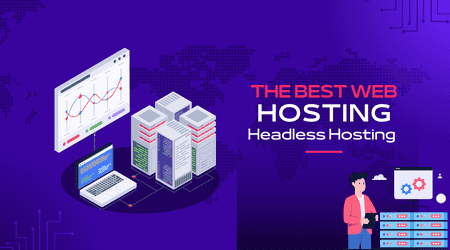
 Evolution of Web Development:
Evolution of Web Development: Flexibility:
Flexibility: A. E-commerce platforms:
A. E-commerce platforms: A. Learning Curve:
A. Learning Curve: A. Continuous Evolution:
A. Continuous Evolution: Case Study 1: Headless Hosting in Action:
Case Study 1: Headless Hosting in Action:
 Before delving into the impact of
Before delving into the impact of  Performance is paramount when it comes to web hosting, as users expect websites to load quickly and have a seamless navigation experience. AI plays a key role in optimizing performance through various mechanisms. Let’s read How Does AI Impact Web Hosting with performance…
Performance is paramount when it comes to web hosting, as users expect websites to load quickly and have a seamless navigation experience. AI plays a key role in optimizing performance through various mechanisms. Let’s read How Does AI Impact Web Hosting with performance… As cyber threats become more sophisticated, robust security measures are essential to protect your web hosting infrastructure and sensitive data. AI extends traditional security frameworks by introducing proactive defenses. Let’s read How Does AI Impact Web Hosting with security measures…
As cyber threats become more sophisticated, robust security measures are essential to protect your web hosting infrastructure and sensitive data. AI extends traditional security frameworks by introducing proactive defenses. Let’s read How Does AI Impact Web Hosting with security measures…
 As AI technology continues to advance, the future of web hosting looks promising. AI-driven innovations such as autonomous systems, self-healing infrastructure, and cognitive computing have the potential to further revolutionize web hosting, making it more efficient, secure, and resilient than ever before.
As AI technology continues to advance, the future of web hosting looks promising. AI-driven innovations such as autonomous systems, self-healing infrastructure, and cognitive computing have the potential to further revolutionize web hosting, making it more efficient, secure, and resilient than ever before.
 Before we delve into the details of
Before we delve into the details of  Reliability and Uptime Guarantee: E-commerce websites cannot afford downtime that directly impacts sales and customer experience. Look for a hosting provider that offers a high uptime guarantee (preferably 99.9% or higher) so that your online store is always accessible to your customers.
Reliability and Uptime Guarantee: E-commerce websites cannot afford downtime that directly impacts sales and customer experience. Look for a hosting provider that offers a high uptime guarantee (preferably 99.9% or higher) so that your online store is always accessible to your customers. When choosing a web hosting provider for your e-commerce store, it’s important to compare the features, performance, pricing, and customer support of different providers. Here is a comparison of some popular e-commerce hosting tools .
When choosing a web hosting provider for your e-commerce store, it’s important to compare the features, performance, pricing, and customer support of different providers. Here is a comparison of some popular e-commerce hosting tools . WooCommerce is a popular e-commerce plugin for WordPress websites that helps turn your WordPress site into a fully functional online store. It offers flexibility, extensibility, and a wealth of plugins and themes to customize your shop. However, WooCommerce requires separate hosting, and performance may vary depending on your hosting provider and server configuration.
WooCommerce is a popular e-commerce plugin for WordPress websites that helps turn your WordPress site into a fully functional online store. It offers flexibility, extensibility, and a wealth of plugins and themes to customize your shop. However, WooCommerce requires separate hosting, and performance may vary depending on your hosting provider and server configuration.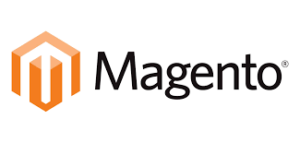 Magento is a powerful open source e-commerce platform known for its scalability and advanced features. It offers robust e-commerce features, including multi-store support, advanced product management, and extensive customization options. However, Magento requires professional hosting and technical expertise to effectively set up and manage it.
Magento is a powerful open source e-commerce platform known for its scalability and advanced features. It offers robust e-commerce features, including multi-store support, advanced product management, and extensive customization options. However, Magento requires professional hosting and technical expertise to effectively set up and manage it. BigCommerce is a cloud-based e-commerce platform that offers a variety of features to suit online businesses of all sizes. It offers built-in hosting, customizable templates, secure payment processing, and scalability to keep up with your growth. However, some users may find BigCommerce’s pricing plans to be restrictive compared to other options.
BigCommerce is a cloud-based e-commerce platform that offers a variety of features to suit online businesses of all sizes. It offers built-in hosting, customizable templates, secure payment processing, and scalability to keep up with your growth. However, some users may find BigCommerce’s pricing plans to be restrictive compared to other options. Apache Tomcat offering unparalleled reliability and performance. Its optimized servers ensure lightning-fast loading speeds and maximum uptime, crucial for online stores. With scalable resources, advanced security measures, and expert support, Tomcat provides a secure and seamless hosting environment, empowering businesses to thrive in the competitive ecommerce landscape.
Apache Tomcat offering unparalleled reliability and performance. Its optimized servers ensure lightning-fast loading speeds and maximum uptime, crucial for online stores. With scalable resources, advanced security measures, and expert support, Tomcat provides a secure and seamless hosting environment, empowering businesses to thrive in the competitive ecommerce landscape. The Sock Drawer is an online retailer specializing in unique and colorful socks. The company selected tools for its e-commerce platform based on ease of use, integrated hosting, and comprehensive features. Reliable hosting infrastructure and scalable resources have allowed The Sock Drawer to handle significant traffic spikes during sales and promotions without downtime or performance issues.
The Sock Drawer is an online retailer specializing in unique and colorful socks. The company selected tools for its e-commerce platform based on ease of use, integrated hosting, and comprehensive features. Reliable hosting infrastructure and scalable resources have allowed The Sock Drawer to handle significant traffic spikes during sales and promotions without downtime or performance issues. Beardbrand is an e-commerce store that sells men’s grooming products such as beard oil, balm, and grooming kits. The company chose WooCommerce as its e-commerce platform due to its flexibility, customization options, and seamless integration with WordPress. Beardbrand chose managed WordPress hosting from a reputable hosting provider to ensure fast loading speeds, reliable uptime, and robust security. By choosing the right hosting solution and optimizing website performance, Beardbrand was able to provide its customers with a smooth and seamless shopping experience, resulting in increased sales and brand loyalty.
Beardbrand is an e-commerce store that sells men’s grooming products such as beard oil, balm, and grooming kits. The company chose WooCommerce as its e-commerce platform due to its flexibility, customization options, and seamless integration with WordPress. Beardbrand chose managed WordPress hosting from a reputable hosting provider to ensure fast loading speeds, reliable uptime, and robust security. By choosing the right hosting solution and optimizing website performance, Beardbrand was able to provide its customers with a smooth and seamless shopping experience, resulting in increased sales and brand loyalty. Nest Bed is an online retailer that sells mattresses, bedding, and furniture. The company chose BigCommerce as its e-commerce platform because of its comprehensive features, integrated hosting, and scalability. Thanks to BigCommerce’s reliable hosting infrastructure and built-in security features, Nest Bedding was able to focus on growing its business without worrying about technical issues or downtime. BigCommerce’s integrated payment processing and SSL encryption streamlined the checkout process and increased customer trust, resulting in increased conversion rates and sales.
Nest Bed is an online retailer that sells mattresses, bedding, and furniture. The company chose BigCommerce as its e-commerce platform because of its comprehensive features, integrated hosting, and scalability. Thanks to BigCommerce’s reliable hosting infrastructure and built-in security features, Nest Bedding was able to focus on growing its business without worrying about technical issues or downtime. BigCommerce’s integrated payment processing and SSL encryption streamlined the checkout process and increased customer trust, resulting in increased conversion rates and sales. JioMart, the ecommerce arm of Indian conglomerate Reliance Industries, disrupted the market by leveraging a robust web hosting solution. With scalable infrastructure, JioMart effectively handled high traffic volumes and ensured seamless transactions. Its focus on user experience, fast loading times, and secure payment processing contributed to its rapid growth. This case study underscores the importance of reliable hosting for ecommerce success, inspiring online stores to prioritize infrastructure that can support their growth ambitions.
JioMart, the ecommerce arm of Indian conglomerate Reliance Industries, disrupted the market by leveraging a robust web hosting solution. With scalable infrastructure, JioMart effectively handled high traffic volumes and ensured seamless transactions. Its focus on user experience, fast loading times, and secure payment processing contributed to its rapid growth. This case study underscores the importance of reliable hosting for ecommerce success, inspiring online stores to prioritize infrastructure that can support their growth ambitions.
 Edge computing (EC) represents a paradigm shift in the way data is processed. This means moving from centralized data centers to the edge of the network, closer to where data is produced and consumed. This distributed computing approach brings several benefits to web hosting:
Edge computing (EC) represents a paradigm shift in the way data is processed. This means moving from centralized data centers to the edge of the network, closer to where data is produced and consumed. This distributed computing approach brings several benefits to web hosting: Containerization is revolutionizing the way applications are deployed, managed and scaled in the cloud. Containerization brings several benefits to web hosting by encapsulating applications and their dependencies into lightweight, portable containers.
Containerization is revolutionizing the way applications are deployed, managed and scaled in the cloud. Containerization brings several benefits to web hosting by encapsulating applications and their dependencies into lightweight, portable containers. Automation is becoming increasingly popular in web hosting due to the need to streamline operations, reduce costs and increase efficiency. By automating repetitive tasks and workflows, web hosting providers can:
Automation is becoming increasingly popular in web hosting due to the need to streamline operations, reduce costs and increase efficiency. By automating repetitive tasks and workflows, web hosting providers can: Edge computing, containerization and increased automation are having a significant impact on website performance and user experience:
Edge computing, containerization and increased automation are having a significant impact on website performance and user experience: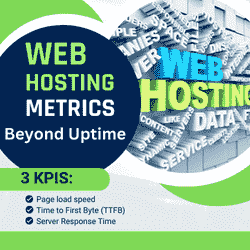
 1. Page Load Speed:
1. Page Load Speed:
 To measure and optimize this effectively, utilize the following tools and resources:
To measure and optimize this effectively, utilize the following tools and resources: To measure and improve server response time, leverage the following tools and resources:
To measure and improve server response time, leverage the following tools and resources:

 What is web hosting?
What is web hosting? A budget-friendly hosting solution that boasts affordability, scalability, and customized features is paramount for beginners who want to build a solid online foundation. These solutions enable startups to navigate the complexities of the digital landscape and create an environment that enables growth, innovation, and competitiveness.
A budget-friendly hosting solution that boasts affordability, scalability, and customized features is paramount for beginners who want to build a solid online foundation. These solutions enable startups to navigate the complexities of the digital landscape and create an environment that enables growth, innovation, and competitiveness. Shared Hosting Options
Shared Hosting Options The hosting space is constantly changing and new trends are emerging that positively impact small businesses. Additionally, hosting will be driven in the future by technologies such as edge computing, serverless architectures, and advances in AI. Knowing these trends can help businesses make wise decisions regarding their hosting strategy.
The hosting space is constantly changing and new trends are emerging that positively impact small businesses. Additionally, hosting will be driven in the future by technologies such as edge computing, serverless architectures, and advances in AI. Knowing these trends can help businesses make wise decisions regarding their hosting strategy.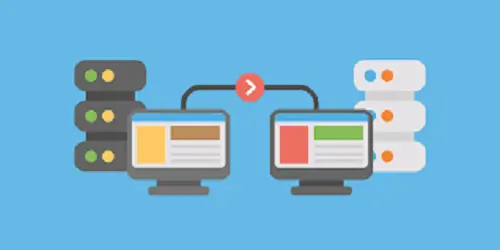
 Planning is essential for a successful website migration. Take the time to allocate sufficient resources to your website migration project, create a solid migration checklist, and train your team members to make them aware of the risks involved.
Planning is essential for a successful website migration. Take the time to allocate sufficient resources to your website migration project, create a solid migration checklist, and train your team members to make them aware of the risks involved. Before starting the technical steps, you must first select a new web hosting provider. This is one of the most important factors you need to consider when migrating your web hosting to find a suitable host to migrate your website to. Below are some factors to consider.
Before starting the technical steps, you must first select a new web hosting provider. This is one of the most important factors you need to consider when migrating your web hosting to find a suitable host to migrate your website to. Below are some factors to consider. Before you start transferring your website, it’s important to save your website files in case you lose them. First, download the website’s files via FTP (File Transfer Protocol) Or Download the file as Zip file format.
Before you start transferring your website, it’s important to save your website files in case you lose them. First, download the website’s files via FTP (File Transfer Protocol) Or Download the file as Zip file format. Before you begin this step, note that not all websites have a database, so this may not be a necessary step. In this case, skip this step (go to number 7).
Before you begin this step, note that not all websites have a database, so this may not be a necessary step. In this case, skip this step (go to number 7).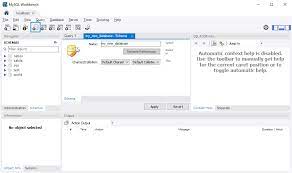 To import a database into your new hosting dashboard, you must first create an empty database.
To import a database into your new hosting dashboard, you must first create an empty database. Now that you have a full backup, transfer it to a new location. But before you release it to the world, double-check that it works in a private, “risk-free environment.”
Now that you have a full backup, transfer it to a new location. But before you release it to the world, double-check that it works in a private, “risk-free environment.”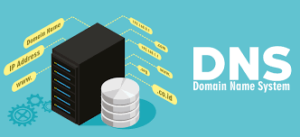 There is now one final step left. That is to change the
There is now one final step left. That is to change the